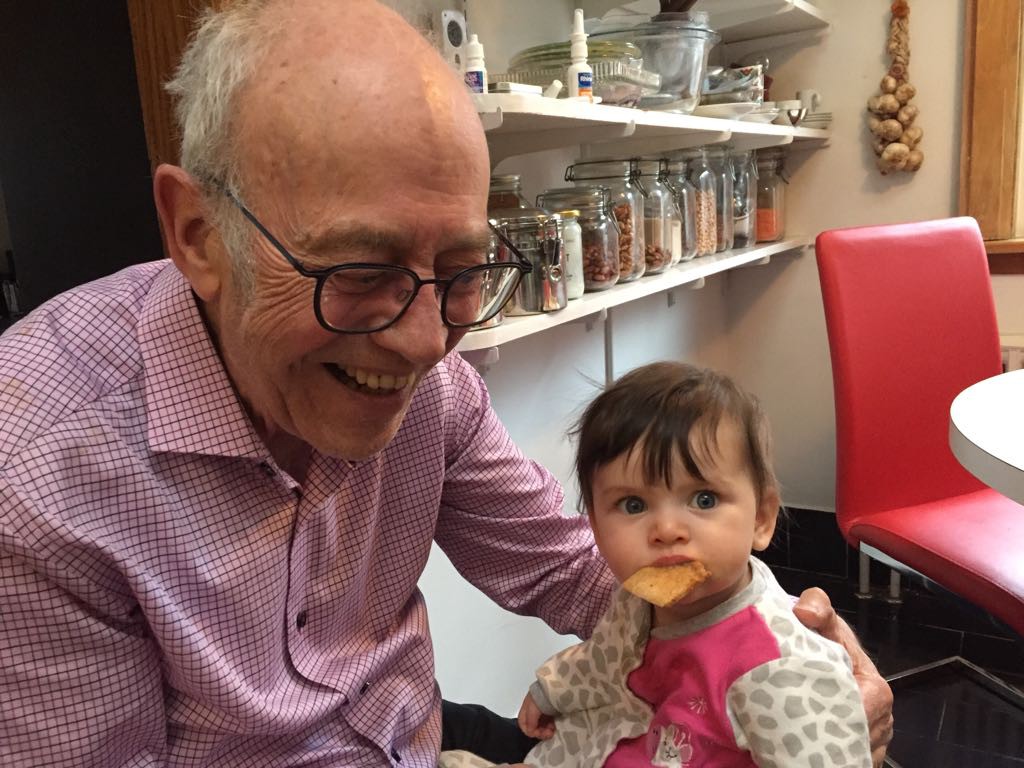Can a new ethic about “ethnic” foods transform our food system to be more diverse, inclusive & local?
Can heritage Mexican, African or Chinese foods be grown in a cold North American or European climate — enough food at a good enough price to meet food security, multicultural, sustainable and affordability needs of a modern cosmopolitan city?
Or do we need to import such world crops, just as we import most of our foods, from around the world?
Debate has raged since the 1990s about the downsides of globalization. The global corporate foods on offer at supermarkets may have too much sugar, fat, salt, and packaging, but the price is low — or at least the entrance fee is low. Is this the best we can do or imagine in a world flattened by modern communication and transportation technologies?
Then along comes a sleeper in the Great Globalization Debate — glocalization. What’s that?
Glocal foods are locally-grown foods with breeding and heritage that comes from all four corners of the earth.
Glocalization might mean that newcomers (aka immigrants) looking for the real taste of home will save local food systems in their new home countries.
Many people assume that today’s long-distance food system (it’s commonly estimated that an average food item travels 2000 kilometers from farm-to-fork) is inevitable.
 The world is flat, one false prophecy had it. In fact, the future will be diverse.
The world is flat, one false prophecy had it. In fact, the future will be diverse.
The world is flat, one famous prophecy of the new world of the 1990s had it. Outsourcing of food was seen as the inevitable result of modern scales of mass production and high-speed logistics. There are no alternatives, it is said.
Actually, a few tweaks to the latest in technological, logistical and entrepreneurial prowess can lead to a food system that is anything but flat. With a little help from season extension techniques and indoor agriculture, many nutritious comfort foods from around the world can be part of every region’s local, sustainable, diverse and scrumptious diet.
Many foods that humans eat, after all, are largely products of human creation, and can be grown with technologies and techniques that ease up on the dictates of climate and other physical givens.
WHERE GLOCALIZATION COMES FROM
The glocal trend is not driven by technology or corporations. It responds to major cultural and population shifts. Glocal food is tuned to the taste, nutrition and cultural preferences of three distinctive groups of eaters who are looking for the best of both global and local food worlds.
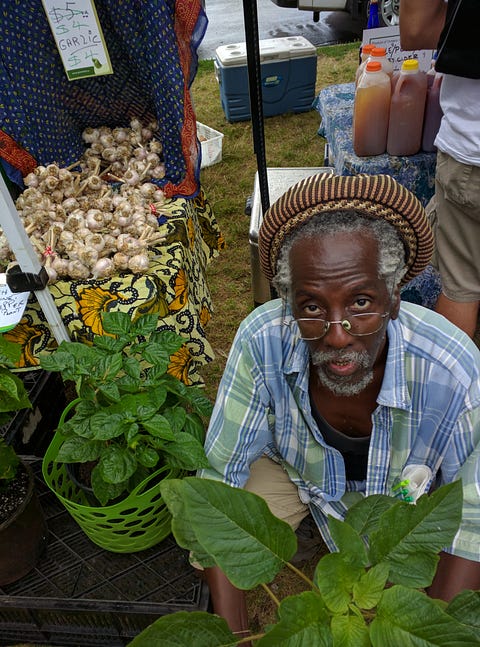 Anan Lololi, founder of AfriCan Food Basket, one of Toronto’s early champions of locally grown world crops
Anan Lololi, founder of AfriCan Food Basket, one of Toronto’s early champions of locally grown world crops
The first group is made up of some 258 million migrants and refugees — mostly people who recently moved to the Global North, but who still long for tastes and mealtime experiences shaped by climates and food cultures from their lands of birth.
If these migrants and refugees all lived in one country, that one country would rank as the fourth-biggest nation in the world. Surely this group not only deserves support because of the trauma many of them have faced. They also qualify as a significant market niche that effective organizations will want to serve.
THANK A FOODIE!
Foodies, a hipster offshoot of yesterday’s stuffed shirt gourmets, are a second new group behind this glocal food trend. This group has been served up by two Toronto sociologists, Josee Johnson and Shyon Baumann, in a book called Foodies.
Today’s sophisticated music lovers take pride in their accomplished consumerism, which has allowed them to break free from the monopoly of old-fashioned High Culture classics. Beethoven may or may not roll over, but today’s sophisticates plan to enjoy as much variety as the concert halls, bars, You Tubes, downloads, busker sites and streets of the world now offer.
In the same way, Johnson and Baumann argue, today’s foodies hunt for exquisite ingredients far beyond the tame ones featured in your grandmother’s High Cuisine.
Here’s the latest and hottest new food in New York, from Georgia, at the crossroads of Asia and the Middle East
They prefer the preciously cool, authentic and gritty tastes savored by peasants and slum dwellers the world over, as with this Georgian Khachapuri that’s all the rage in New York City these days.
These culinary adventurers want bragging rights that turn them into beer, cider, coffee, chocolate and probiotic snobs, and they have the financial chops to form an appealingly up-market niche that food producers are delighted to cater to.
Instead of thanking a farmer for the local grub, as the bumper stickers urge us to do, the latest trend is to thank a Foodie.
They’re the ones who created the demand for the exquisitely cooked and presented street foods, folk foods and offal now found at all price points in most cities of the Global North — readily available, if you know the out-of-the-way places that express deep insider knowledge of the scene.
Insects, long enjoyed throughout the Global South, are surely next in line for line-ups.
I must admit to finding foodies obnoxious, but I am thankful for what they have done to foster food diversity and hurry the decline of Wonder Bread and foie gras.
A third group, over a billion strong, arises from today’s enthusiasm for international tourism — including “culinary tourism.”
Millions of accomplished travelers have fond memories of their experiences with “the real and authentic tastes” of Mexico or China or the Caribbean, and look forward to enjoying the same food experience with jealous friends when they all go out to hometown restaurants.
Taken together, the three groups have the muscle to create an international glocal food trend. They have the market pull it takes for local growers, processors, retailers and chefs to come out of the woodwork.
Wouldn’t it be ironic if this convergence of groups, each a product in some way of globalization, created scaled-up demand for authentic locally-grown world foods. “Every action produces an equal and opposite reaction,” it’s said.
Those are the questions I asked myself when I read two books that help us understand a defining food trend of the upcoming generation of producers and eaters.
Emma-Jayne Abbots’ book on The Agency of Eating, and Glen Filson’s and Bamidele Adekunle’s book on Eat Local, Taste Global, are breakthroughs in food studies.
DISRUPTING THE STUDY OF FOOD
Both books might be thought of as academic monographs because they are so specific and limited. But they are breakthroughs because of the very detailed way they exemplify a new way of approaching the relationship between people and food.
The two books are not about agriculture, not about business, not about nutrition or health — not about any of the categories already owned and controlled by established professional disciplines and government departments.
They are examples of a new category of analysis created by food movements — people-centered food studies that form the basis for people-centered food policy. It is as much a disruption to food and health studies as the social media is to the traditional media and Amazon is to traditional retail. It reinvents the field.
Agriculture, nutrition and business no longer have a lock on popular thinking about food, though their lock on government policy remains almost as strong as ever.
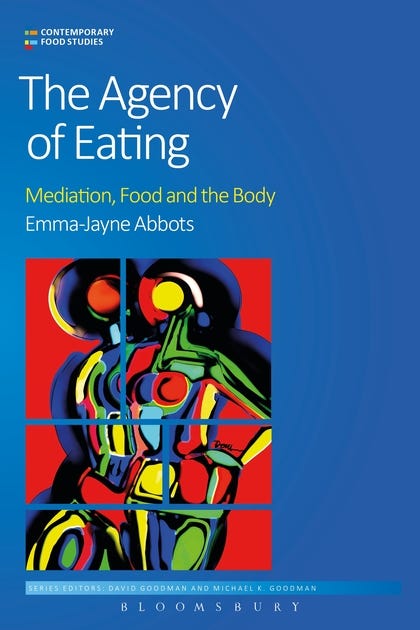
All of a sudden, people, not agriculture or nutrition, came to the foreground of food. And human agency came with it.
The new kids on the food block want to know about and check out food that relates to cultural identity, place, terroir, mental well-being, conviviality, community development, artisanal practices, sustainability, romance, main street viability, waste management, animal welfare, fair trade, people places, personal and group empowerment, and personal liberation.
These are the kinds of topics generated by urban food movements, which have been able to form working alliances with academics in geography, anthropology and equity studies who had been frozen out of inner circles controlling research funding for the old knowledges.
THE RISE OF PEOPLE-CENTERED FOOD POLICY
From my Toronto Food Policy Council days, I have the scars to show this new realm of food analysis was not welcomed by the old food establishment. People-centered food research and policies emerged from a power struggle, and overcame the resistance from government, business and professional groups who had a vested interest in confining issues and debates to the same old pillars of nutrition and agriculture.
After retiring in 2010, I discovered and helped spread the term “people-centered food policy” to highlight the need for a new framing of food policy issues that went beyond nutrition and agriculture. If people issues are defined as “soft” issues, then soft issues will counter the domination and hegemony exercized by the old categories of “hard” knowledges, practices and power.
I welcome these two new books as examples of new insights that will arise from this new people-centered framing of food. (I hasten to add that I am not in any way implying that the authors of these two books see themselves within this context).
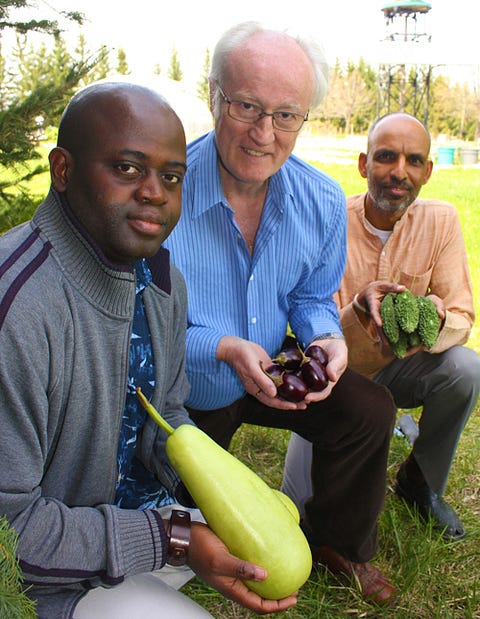
leaders of the Guelph research team for Eat Local, Taste Global: left to right, Bamidele Adekunle, Glen Filson and Sridharan Sethuratnam
Both authors want to know about what food does to people and people do to food. They study relationships based on human agency, empowerment, identity and longing. And they study food relationships to explore existential questions about human identities and realities.
They understand, as I read them, that the proper study of food is people.
Abbots explores eating as a tantalizing human experience. Filson and Adekunle investigate a specific group, immigrants, in specific places, Toronto and Guelph. I paired the two books in one review essay because they both deal with how food engenders human agency and empowerment.
THE HUMAN SIDE OF FOOD
I start with Abbots’ book because it is crucial to see the immigrant experience with food as part of a shared human experience. Immigrants are not a them, but an us. We all share a human experience with food, regardless of whether we come from Indigenous, settler or immigrant stock.
People who choose to use inclusive language have long avoided dehumanizing phrases such as “low-income people” rather than “people on low income,” or “the disabled” rather than “people with disabilities” — the point being that an individual’s personhood and humanity belong in the foreground of identification.
The same logic should apply to people new to the country, who should not be classed as people who only exist as members of a group of outsiders. In Toronto, for instance, the office in charge of working with people who have migrated from elsewhere is the office for newcomers, not immigrants. That draws attention to the fact that that newcomers came later than many others; but that is the only difference.
Newcomers are not different or “others,” in the sense that others belong now and will forever belong to a group of outsiders, who weren’t born here.
Being Indigenous, settler or immigrant is often crucial to how people live their lives. But they were all born equally human. We are all the same under the skin and under the teeth.
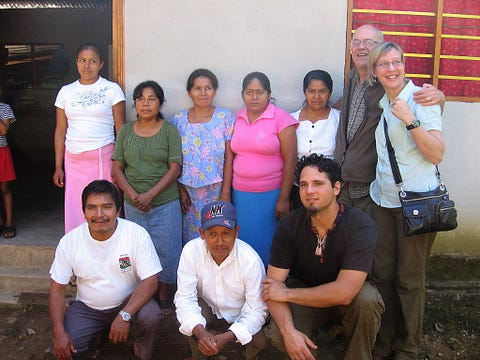
Michael Sacco (bottom, right) of ChocoSol Traders took me and Lori Stahlbrand (top right) to the jungles of Mexico to find cacao and other delicacies invented and domesticated there by Mayans, long before 1492. Sacco grows maize (corn) and many other items used in Mayan cuisine locally, but stays true to Mayan traditions so his products are glocal.
We need to avoid defining the immigration experience as an experience of others who are different. We also need to avoid tagging individual immigrants as primarily and fundamentally members of a group of outsiders — as if there were not as many differences within a group as there are between groups.
Instead, in an era when polarization and divisiveness are often socially and politically toxic, I believe we should start with commonalities.
When it comes to food, for example, it is important to center public policy on universal needs that everyone shares: food security, food agency and access to culturally appropriate choices. Since we share a common city and common country, we should start with rights we share in common, not just cultural preferences that make us distinctive: unity in diversity.
From this perspective, the human need for agency in order to survive and thrive is all-important. That’s why food policy needs to foreground food as an expression of human agency and self-fulfillment.
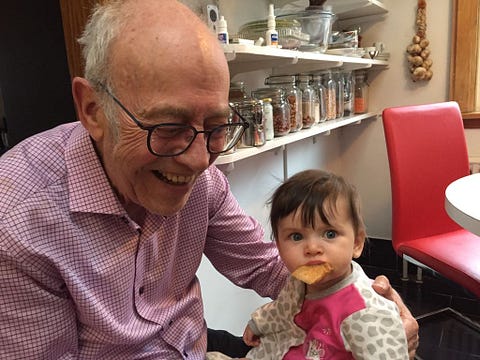
I got to witness the first agency of deliberate eating
Forgive my state of near-religious ecstasy on this subject, but I write this after feeding my eight-month old granddaughter this morning. I think I saw her first time actually eating solid food.
We’ve been spoon-feeding her for over a month, but today she used hand-eye coordination and some understanding of sequencing to bring a teething cracker to her wide-open mouth. Later, she opened her mouth to receive some spooned food and actually chewed on it before swallowing. I think I saw her gloat at her accomplishments.
As I see it, this is her first step to personal agency and autonomy, using many parts of her own body and mind to take charge of what she eats.
THE AGENCY OF FOOD
Eating is not only essential to life, it is essential to asserting personal autonomy — as opposed to “spoon feeding,” a phrase we use to suggest lack of personal judgment and initiative. As an act of human agency and personal development, eating is worthy of more respect than is expressed in the passive term “consume.”
First bites are followed by many other food-related expressions of personal agency during childhood. In industrial societies, we downplay these accomplishments by describing them as “child’s play.” But shouldn’t we see children’s delight in gardening and eating as delight in their own development of agency and personal fulfillment?
The education system denies children the right to be enabled in this facet of capacity development when it denies a place for gardening, cooking and food literacy in the school curriculum. But educators aware of the potential of working with children’s maturing sense of agency have identified many growth opportunities in such experiences. (See here, for example.)
I have another personal but more grown-up stake in this perspective toward eating, because food agency is the issue that drew me into food activism. Until 1996, my commitment to environmentalism and social justice was dispersed across many issues, from buildings to transportation to energy to forestry policy. But in 1996, I decided to focus my work on food policy, because only food brings to bear the kinds of personal agency and empowerment that create liberating social movements.
The amazing thing about Abbots’ book is that it is the first book-length study of what goes into how humans manage the eating process. Imagine if we had ignored breathing, drinking water, sleeping or sex to the same extent, and that we were only now reading our first books on these subjects!
The ignoring of eating says something about how effectively food has been carved into tiny specialties of expertise, while the actual human relationships with food have been ignored.
Eating and its agency are also totally at odds with the industrial agriculture and Big Science conceits to “feed the world” or “feed the nine billion.” The very act of putting feeding rather than eating at the center of the narrative speaks volumes to the assumptions of dominance among those who claim they will feed the world. Livestock are provided with “feed.” Feeding stations are provided in refugee camps. Newborns are breastfed. Hunger strikers are force-fed. Eating is for humans and people who exercise agency and claim their own dignity and power to feed themselves, not be fed.
It is important, I believe, that the breakthrough quality of these books be recognized and understood against this background of neglect. This neglect permitted an enormous error in terms of casting, because eaters have been miscast as consumers, whose only role of agency is to buy the food.
Neglecting the physicality and mentality of eating has allowed eating to be subsumed within an entirely commercial, not human, relationship to food. The neglect of eating, in short, is a product of a food system based on commodity, not human, relationships.
The Agency of Eating is based on Abbots’ field research in peasant villages of Ecuador and on her wide reading in anthropology and theory.
As I read her, she understands agency at two levels.
At one level, the actual work of eating and chewing — not just swallowing or “hoovering ”or “down the hatch” — represents an act of agency.
To participate as agents, humans evolved with hands and teeth and a sense of smell that provides food with its tastes and makes mouths water, so digestion is possible.
We weren’t born with cash registers sticking out of our mouths, in preparation for a life as consumers, any more than we were born to be wild animals, with short intestines and sharp teeth so we could wolf down raw meat.
The second level of agency refers to what Abbots calls the “assemblage” of activities that culminate with full frontal eating. She works backward from the toasts that grace the beginning of a meal and the rituals of setting tables and preparing meals. Such rituals represent physical and cultural evolution from the nasty, short and brutish hand-to-mouth experience of gobbling alone while on the move — a primitive and anti-social form of eating linked to today’s fast food culture.
Abbots’ set of assemblages also encompasses the links in the food supply chain taken over by the commercialized assemblages known as agribusiness — a force staring at the face of lone eaters, which she does not acknowledge or comment on.
Surprisingly, given the range of growing and preparation activities Abbots includes in her assemblages, she devotes little time or attention to cooking, or to Michael Pollan’s important book on cooking and its centrality to human evolution. Pollan positions food preparation at the center of human agency, the pivot point of human evolution and the heart of the human experience. I believe that his insights need to be included in any rounded understanding of the agency of eating.

Pairing a book on agency and diverse retailing allows us to see food for newcomers as part of providing agency for newcomers
For purposes of this blog, Abbots’ work whets the appetite for Filson’s and Adekunle’s book on the glocalizing practices of newcomers to Toronto and the Greater Toronto Area and Guelph. People who transplant themselves to a new country often strive to keep alive their connections to motherland practices that gave them a sense of meaning and comfort before they emigrated.
One way to renew these connections from afar is through food. This can be done in both private and public places, and during both personal and collective celebrations.
Food travels quite well these days, but it is imported only as a final product or version of a final product (mango juice or dried mango, rather than mango, for example), without many of the assemblages that support an eater’s efforts to engage comforting memories essential to comfort foods.
To the extent assemblages are essential to the agency of eating, foods for newcomers should as often as possible be grown or processed in local environments, where they can be part of the transitional welcome wagons of a new country.
In that context, the policy issue is: what food services and assemblages does a self-described multicultural society provide to families of newcomers to protect and foster their cultural agency as eaters?
BUILDING AGENCY FOR NEWCOMERS
At mealtime, the burden of obligation for what is served at dinner falls on the host, not the guest. A modern and gracious hosts asks the guest about any food allergies and preferences. At a countrywide level, a modern and gracious food system should do the same for both longstanding and recent settlers.
Like most countries, Canada does not have a food policy of any kind. Specifically, Canada does not have a food policy that requires respect and accommodation for multicultural food offerings, experiences or agency.
Filson and Adekunle argue that Canada’s human rights legislation should apply to respect for diverse food practices and offerings, just as they apply to diverse forms of religious observance, different colors of skin and different ways of expressing gender.
This would mark an important advance in equitable treatment of all Canada’s multicultural populations, and a huge advance in government regulation of food as a human right — inherent to people because they are human and because agency is integral to our humanity and well-being, not because they are instrumental to some other purpose.
By specifying human rights commission oversight of the right of newcomers to access culturally appropriate foods, the authors show their own understanding that the issue of culturally appropriate food is an existential one, not just a corollary of economics or health. In general, issues germinated by people-centered food policy share that existential quality, which is not brought to the fore in conventional food policy.
Human rights staff should also assist agriculture departments and ministries so they can enable the agency of farmers, food processors and retailers.
WHY THIS IS DISRUPTIVE
Because the work of providing culturally sensitive foods is itself loaded with agency issues for the food system. Is agriculture and food policy so overwhelmed by demands of industrial scale that quality and diversity of production are subordinated to mass production and monoculture? Are direct sales from farmers to discreet audiences and markets encouraged in distribution policies?
There’s a simple explanation for why food for ethno-cultural minorities is fundamentally disruptive. It challenges the fundamental operating principle of an industrial food system — mass production and consumption of standardized and uniform products.
Diversification — the key to good agricultural and environmental practices, and the key to reaching out to markets with high-value specialties — is at odds with industrial uniformity. It upsets the apple cart, by wrenching food production, distribution, processing and preparation toward “customerization.” Customerization is the business end of people-centered food policy,
I used to think that Slow Food was overblown, pretentious and presumptuous when it classified knowledgeable and engaged eaters as “co-producers” of foods alongside farmers. Given the hard work done by farmers and processors, I still prefer being called a partner to being called a co-producer. But I now see where the Slow Fooders were coming from.
At both personal and policy levels, the challenge of creating a multicultural food system requires us to think in terms of a phrase I’ve heard from farm entrepreneurs such as Rob Baan in The Netherlands — food ecosystem. It’s not a supply chain, as in chain of command. It’s an ecosystem where eaters and producers are connected in dynamic and ongoing ways.
This is the can of worms — we now know worms are a good thing, not a bad thing for fertility — that Filson and Adekunle open in their book.
Although they reimagine a supply chain that isn’t as corporate as the one that dominates the food system now, if they were a bit more daring they might conceive of disruptive innovation that bypasses today’s food supply chains in the service of various food qualities, such as multiculturalism.
For example, I’ve become a champion of a web-based enterprise called Seed Voyage, which may well end up being as much a disruption of the food chain as the Amazons of the world.
Seed Voyage links home gardeners and smallhold farms that produce specialty crops — which is one way of thinking about the diversity that becomes normal in a multicultural food system — with neighborhood buyers. Someone searching for a producer of the Caribbean green called calaloo within two miles of their home, for example, puts that information into the form on the website, and the computer informs them as soon as a grower meeting that specification signs up.
Is it too much to ask that such direct and neighborly relations might be embedded in a multicultural food system?
If backyard gardeners, smallholder producers near cities and indoor agriculturalists got their acts together, most metropolitan areas could offer a wide and lucrative range of heritage, heirloom, specialty and ethnocultural crops. It’s not too much of a stretch to imagine a produce section of the food system based largely on glocal production techniques and relationships.
That’s a system where agency and multiculturalism dovetail with increased food safety, improved environmental management, more jobs, and heightened nutrition.
Such a system could also meet the challenge posed frontally by Filson and Adekunle: to link food sovereignty and culturally appropriate foods.
I’m already salivating at the thought that we may soon be able to thank newcomers for creating conditions that allow all of us to bring our food system back home.
(FULL DISCLOSURE: When I managed the Toronto Food Policy Council, we partnered with Glen Filson and his students to help them with their research at University of Guelph on this project. I was also the independent expert reviewer who assessed the manuscript for publication with public funding assistance. I have no conflicting financial or personal relationship with any of the authors.)


